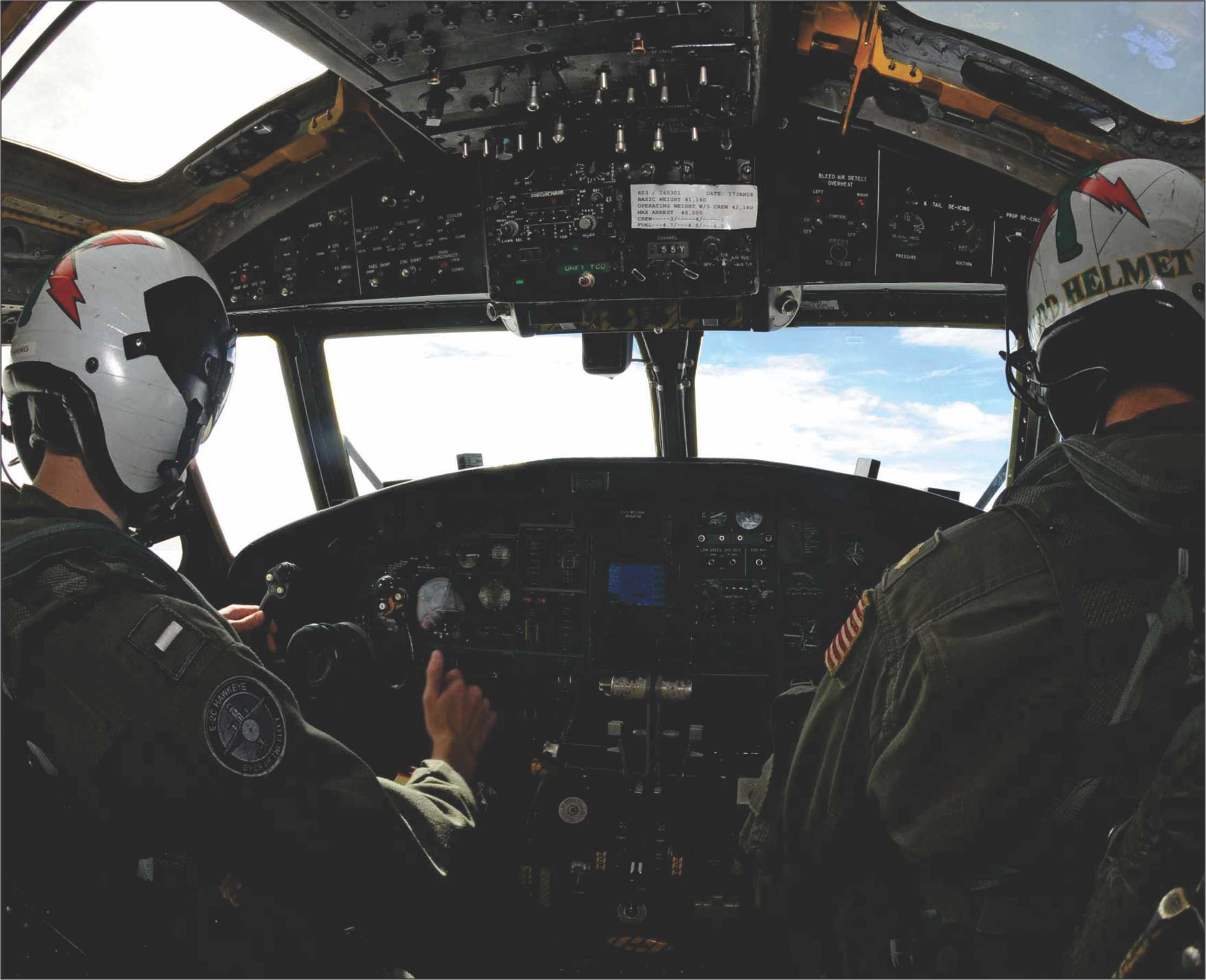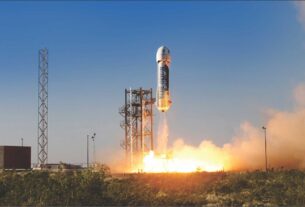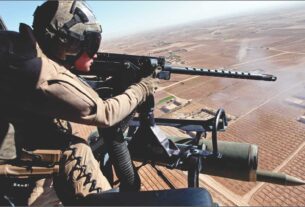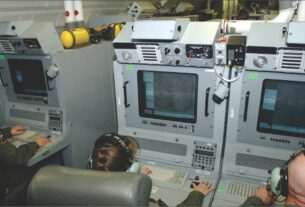No doubt, the kill capability of modern military has grown tremendously in recent years due to the advent of latest technologies, yet it is proving to be a hide and seek game since the enemy is also going to put a cocktail of modern technologies with superior war strategy to avoid detection.
Compared to the Cold War Era today’s battlefield has gone from an enemy that was easy to find but hard to kill to an enemy that is hard to find but easy to kill.
Indeed, training consists of an inherent part of better strategy and evolving tactic but due to rising cost most militaries are opting to go for simulated conditions than a real time war exercise or engagement in a true war theatre.
Indeed, spiraling costs and ever increasing technological advances have given aircraft training technology new importance. However, the simulators are the future of warfare as militaries are finding it hard to sustain budget allocations.
With technology incorporated aboard next generation military aircraft increasing to unprecedented levels, it has become almost imperative that pilots are well versed in the layout and workings of an aircraft before even venturing inside the cockpit.
Coupled with the spiraling cost of individual aircraft, simulation technology capable of providing trainee pilots with an ample flight education has taken on a new importance.
Advancements in projection technology and visual systems have led to the development of ‘fully immersive’ training environments, whereas the use of actual components seen onboard next generation aircraft are providing trainee pilots with the kind of familiarity necessary for a seamless integration into their designated aircraft.
Simusphere HD-9 technology, incorporated by L-3, comprises HD databases, image generation systems, physics-based technology and visual system displays in order to create highly realistic training environments for trainee pilots to operate in.
The technology is used to create a 360 degree high definition display system, something which L-3 dubbed as ‘fully immersive’, which adds increased realism to flight training.
The simulators, which are delivered in Block 40/42 and 50/52 configurations, can support the development of pilots in advanced pilot mission training, tactics validation and mission rehearsal.
Simulators using L-3’s Simusphere technology are installed across US facilities in order to train pilots for F-16 missions in the US, Europe and Pacific regions.
Whereas the F-16 fighters have been a staple of the US Air Force since their introduction in 1978, Air Forces are progressively looking further forward in order to fulfill their mission requirements in terms of pilot training. In order to complete this, a new raft of flight simulators for fifth generation aircraft is currently in production.
With the air forces of the US, UK, Italy, France, Australia, Canada, Netherlands, Norway, Turkey, Israel and Japan building their capabilities around the Lockheed Martin-built F-35, and with a unit cost of between $197m and $236.8m depending on the choice of model, it is worth having a vested interest in ensuring that any pilot stepping into the cockpit has the best possible training available.
Full mission simulator
To achieve this, Lockheed Martin has delivered a complete F-35 Full Mission Simulator (FMS), a complete flight simulator that combines a high-fidelity, 360 degree visual display system with a reconfigurable cockpit in order to produce an entirely realistic reconstruction of the actual F-35 cockpit.
For added realism, the FMS uses actual aircraft software that is to be used aboard in-service F-35s and replicates all F-35 sensors and weapon deployment systems.
Training technology used for the Joint Strike Fighters brings a new capability to the joint services. The smooth surface, high-resolution dome is a dramatic improvement over legacy fighter simulators.
The high visual acuity and utilization of a significant amount of real aircraft parts and source code will allow the military to train a wide variety of mission tasks previously not accomplished in simulators.
The reconfigurable cockpit is a key element of the FMS, allowing the one simulator to replicate the conditions of all three F-35 variations that are currently being produced.
In replicating these conditions, air forces set to take delivery of multiple variants can train pilots in the same simulator, rather than ordering multiple simulators, significantly reducing training expenditure.
While flight simulators for next generation fighter jets may steal the headlines, helicopters are notoriously more difficult to pilot than jets, and there is now a complete training platform available for not just helicopter pilots, but also crew.
A helicopter simulator for the HH-60G Pave Hawk personnel recovery helicopter, has been developed in order to train pilots, gunners and engineers.
The Super 60 simulator is the first such simulator to encompass aerial gunner stations on the simulator platform, allowing gunners to train alongside and experience the exact same flight motions as the flight crew.
The system consists of three domes, three image generations and 19 projectors, with one dome for pilots and two domes for the gunner and onboard flight engineer.
Capable of modeling electronic warfare and defensive systems, the simulator allows crew members to practice alternative combat scenarios, such as combat search and rescue missions, aerial refueling and night vision operations.
The simulator, developed by Lockheed Martin, comes as part of the company’s ten-year, $1.1bn Aircrew Training and Rehearsal Support (ATARS) II contract, signed in 2007, succeeding the previous ATARS contract that ran from 1987.
The landscape of aircraft simulation and training could be on the precipice of a polar shift, however. As of 2005, five percent of military aircraft in Iraq and Afghanistan were UAVs, increasing dramatically to 33 per cent as of 2011.
This widespread use of UAVs to fulfill new and emerging mission capabilities is only predicted to increase further, with small UAVs like the Raven earmarked for reconnaissance missions.
The increasing use of UAVs in combat zones, and how they are beginning to shape the changing face of aircraft training is important issue.
While the Program Management Office for UAVs is insisting on the streamlined operation of unmanned systems, using fewer personnel for ground control of the vehicles as there is a need for UAV operators to be well versed in the operation of multiple UAVs, not just one.
The considerable success the US Army has had through using teenagers as operators due to their experience of playing video games, leaving them well equipped due to similarities between operating technology and the controls of the game itself.
The use of hand-held devices, such as iPads, being explored, with voice command control-enabled UAVs are becoming the highlights as the next big thing in unmanned vehicle technology with UAVs essentially given the technology to fly themselves and staying obedient to a handful of active commands, distinctly similar to new developments by DARPA.
Combat training
There are still controversies regarding simulator training. Although some of the training will shift to flight simulators, but pilots tend to look down on simulation-based training as a poor substitute for the real thing.
High-end simulators known as full motion can be just as good for training as real airplanes, contends Kenneth L Ginader, a former flight instructor at the US Navy’s Top Gun fighter weapons school and now director of business development at Environmental Tectonics Corp.
Changing the military pilot mindset about flight simulators has been an uphill climb. The problem is that many of the simulators that are used for training today do not realistically replicate flying, which turns pilots off, he said. “If you are flying at zero knots and always at one G, it is very much like flying your aircraft parked in a hangar.”
Maintaining G-force tolerance is a key element of combat flight training, and that only can be done in full-motion simulators, said Ginader. “When they don’t get enough flying hours, pilots lose G tolerance.”
Full-motion simulators of advanced aircraft such as the F-35 Joint Strike Fighter are costly, with price tags starting at $10 million. Lower end simulators can be useful for specialized learning needs but cannot replicate flight conditions.
The only known way for fighter pilots on the ground to experience the G-forces equal to those in basic fighter maneuvers is in a centrifuge, training experts said.
Centrifuges simulate a generic fighter cockpit at extremely low fidelity and functionality when compared to aircrew training devices, said an expert.
“There is no foreseeable technical solution or technology that will allow fighter pilots to experience the types and durations of G-forces in current aircrew training devices,” he added.
Full-motion trainers, he said, support heavy aircraft such as bombers and transports, as they provide only limited G-force stress. “In the current body of aircraft simulator research, the jury is still out on whether the training motion that systems provide justifies their cost.”
Primary concern
When flying a tactical aircraft, there are three primary stresses that affect pilots, Ginader said. One is workload, such as the pilot operating a weapon system, communications and navigation equipment.
The second is the environment of the training event, as well as weather conditions and hostile surface and air threats. The third is physical, including sustained G forces or duress. “A pilot needs to manage all three of these stresses during every flight,” he said.
More training takes place in flight simulators today than it did just 10 years ago. In the coming year, up to 50 percent of flight training will occur in simulators.
But military buyers tend to target flight simulators or training devices for a singular purpose. In an average pilot school, there are computer-based trainers, weapons systems trainers, cockpit familiarization trainers and full-mission systems.
Non-motion simulators are often high fidelity in look, feel and functionality, but they do not challenge the pilot at all with physical stress or duress. They still operate at zero knots and one G.
Ginader said the Air Force is not taking advantage of the available technology and continues to buy simulators that do not provide a complete training experience.
Full-motion simulators that are updated so they replicate the real aircraft’s technology should be enough to maintain pilots’ combat readiness.
“If you do more training in non-motion flight simulators, pilots could develop negative habit patterns,” he said. “They’re doing complex weapons operations but not feeling the motion, and when you get into the airplane, it does not translate.”
There are chances that in the absence of adequate simulators, continued reductions in flying hours will lead to significant loss of pilot skills.
In fact, soldiers, sailors and airmen could soon be working together to fight huge, highly realistic battles online. Just like gamers playing the latest Call of Duty or Battlefield games, they will be able to co-op across a sprawling network of high-tech simulators.
Latest technologies from Northrop Grumman and BAE Systems are making this virtual dream a reality.
In December 2013, US defence company Northrop Grumman announced it had carried out a unique virtual aerial refueling demonstration.
Virtual mission
The virtual mission, involving a C-17 Globemaster and a KC-135 tanker, was the first-ever to utilise networked simulators to link up geographically dispersed aircrew.
All simulated platforms worked together as if on a real-life mission, replicating the often complex and multi-dimensional aspects of operations.
The connected crews could even use standard visual references, radio communications and the tactical air navigation system-everything an airman would encounter in the real world.
Improving the simulator experience is part of the US Air Force’s attempts to reduce costly real-world flying hours without affecting pilot and aircrew readiness for combat. Ongoing budget cuts in the US have drastically cut the amount of time a pilot spends up in the air.
On average, an air force pilot flew around 120 training hours in 2013, while that figure was more than double a generation ago. In December 2013, military officials warned that US pilots now have fewer training hours than their Indian and Chinese counterparts.
With concerns growing over the quality of training for its airmen, the US Air Force is relying on the increasing sophistication of distributed, networked simulators to fill the training gap caused by fiscal cuts.
This means simulators now have to replicate real-world battlespaces which are often highly complex and interconnected.
As operations in Iraq, Afghanistan and Libya have shown, US forces have to link up across several domains- including air, land, sea and space-and also work alongside personnel from other nations such as the UK and Canada.
Newer, more advanced networked simulators are giving commanders the opportunity to replicate this in a virtual environment.
The US Air Force’s main centre for connecting simulators across distributed networks is the Distributed Mission Operations Center (DMOC), based at Kirklands Air Force Base. Four times a year, the DOMC runs an exercise called Virtual Flag which simulates real-world aerial war games such as the Red Flag series of exercises.
With the latest simulation technology being employed, Virtual Flag can incorporate personnel from the US, Canada, Australia, the UK and many more countries. In September 2013, a Royal Air Force E-3D AWACS crew participated in a Virtual Flag exercise providing vital airborne warning assets to coalition forces, all without leaving their RAF base in the UK.
It is hoped that as technology matures, allied forces will be able to rehearse an entire war in the virtual arena using personnel from across the services.
This not only gives pilots, soldiers and sailors an edge in combat but also means senior commanders can test their plans and doctrines before putting them into practice. It will add a significantly advanced dimension to traditional war gaming practiced by commanders.
This is the future, said Flight Lieutenant Craige Curry, an E-3D Tactical Director. “With the reduction in air forces across the world we rarely get the opportunity to train to this sort of level in the real environment. So training in a synthetic environment with so many different entities gives us an excellent insight to how future warfare would develop.”
The simulation allows aircrew to experience major combat operations and large force deployments, something which is almost impossible to replicate regularly in peacetime.
That means aircrew can suffer from significant ‘skill fade’-meaning an airman becomes less proficient in his/her task-so being able to frequently practice major drills in a cost-efficient way is seen as a vital asset.
British defence giant BAE Systems is also developing simulation systems which can be networked into wider battle space scenarios.
Live training
Last October, the company carried out the UK’s first-ever live training simulation connecting Typhoon pilots at RAF Leuchars in Scotland with other air and maritime assets across four different UK sites.
Using a high bandwidth dedicated engineering network, four Typhoons conducted a virtual swing role mission with assistance from an E-3D Sentry emulator in New Malden and a Type 45 destroyer simulator at the BAE Systems Broad Oak site.
Senior officials from all three services were able to view the unfolding mission from a viewing centre at the company’s site in Warton, where the Typhoon is manufactured.
The Typhoon and Type 45 simulators were fully concurrent with the latest operational standards for both platforms, making it the first joint-simulator training demonstration in Europe where the systems are concurrent with frontline operational platforms.
There is concern among some in the military, however, that no matter how advanced simulators become, they will never be able to fully replace the experiences of real-world flying.
Pilots have to build up airmanship skills which can only be learnt in real aircraft and that often involves long hours carrying out tedious tasks such as administration, navigating bad weather and talking with air traffic control.
Simulators also lack the so-called ‘danger factor’ and participants are sometimes complacent as there is no danger of dying if you make a mistake.
Another negative side of simulation is the lack of motion and G-forces experienced, which in real life would have a massive effect on crew performance.
“We know you can’t simulate the genuine danger of flying, which is why there will always be flying,” Alan Murdoch, head of air and ground training at BAE Systems said recently.
BAE Systems is planning further trials of its networked simulators over the next 18 months which will include the addition of other air, sea and land simulation facilities.
There is clearly a debate on just how much simulation is a good thing. Commanders in the UK and US are constantly assessing the mix of synthetic training and real-world flying for their pilots and other personnel.
But as more advanced networked simulation technologies come online and the training benefits become clearer, it may be easier for people to embrace this technology revolution.
Virtual training is training accomplished in a simulated (virtual) environment through use of simulators that range in capabilities from full mission simulators, part-task trainers, to desk-top Training 2015 Air Force.
The air forces are spending on virtual training is typically represented by flight simulators and training devices for various aircraft. Due to the changing operational environment, where airmen are filling personnel gaps on the ground, there is an increasing need for air force virtual land training.
It is expected that US Air Force expenditures on virtual training will continue to increase through 2015. This will be due, in part, to new and ongoing weapon systems procurements that will require virtual training assets.
Growing training constraints, particularly escalating fuel costs and inadequate access to flight training ranges will also increase the Air Force’s need for virtual systems.
Examples of virtual training include:
• Flight simulators
• Engagement skills trainers
• Threat detection trainers
However, live training is accomplished with operators using real equipment. M&S supports live training through the provision of surrogate weaponry, environments, and targeting.
Due to the constraints of escalating fuel costs and training range challenges, it is expected that Air Force expenditures on live training will slowly decrease or remain stable through 2015.
One exception to this is the increasing demand for unmanned aerial systems (UAS) pilots and training. Examples of live training that utilize M&S include:
• Aerial targets, drones and decoys, and
• Practice bombs and munitions
Constructive training
Also, constructive training is also referred to as Command, Control, Communications, Computers, Intelligence, Surveillance, and Reconnaissance (C4ISR) training. Constructive training is accomplished using constructive simulations to train primarily strategy and decision making.
Examples of constructive/C4ISR training include: Command & Control (C2) training and exercises, threat simulators to improve coordination between players, weapons control systems, and battle-staff training.
Constructive training is increasingly also being used to train operators, develop tactics, techniques & procedures for identify and combating cyber attacks and developing defense against such attacks.
It is expected that US Air Force expenditures for constructive training will remain stable through 2015. An example of constructive training that utilizes M&S capability is Battle staff and Ops center training and exercises.
Education includes formal training done by the military as well as money spent on education for military members and their dependents.
Education is typically provided in classroom settings, campuses, or through online computer based resources. It includes the full realm of education needs, including curriculum development, operating support and training and instructor support for DoD sponsored education.
It is expected that military education spending will remain stable through 2015 as the Air Force relies on well-trained, well-educated personnel. An example of an Air Force education provider is the US Air University.
The M&S technologies available for “making better decisions” are primarily, but not exclusively, used by the Acquisition, Analysis, Planning, Testing, and Experimentation Communities.
These communities use M&S to frame and scope problems, examine alternatives, and provide insight and solutions for Air Force decision makers.
The DoD Analytic Agenda can be used as a framework to provide a common set of accepted scenarios, M&S tools and authoritative data.
Now, India is also developing its own simulation systems. Before it could be a reality, India is going for high quality trainers such as Pilatus..
To help Indian Air Force pilots train more efficiently and cost effectively fly the Pilatus PC-7 MkII training aircraft, ELITE Simulation Solutions is providing a range of flight simulation devices.
The Indian Air Force ordered a fleet of 75 of the Swiss-designed and built PC-7 MkIIs, which are among the most advanced turbine training aircraft in the world.
The first of the ELITE Fixed Base Flight Training Devices, with a 270° visual system and a debriefing suite, is now in service at the Dundigul Air Force Academy, 25 km from Hyderabad.
Four others will be delivered by the company soon. ELITE will also supply an Avionics Part Task Trainer system in addition to the Flight Training Devices to support the training.





